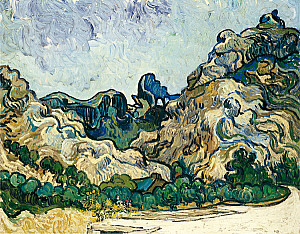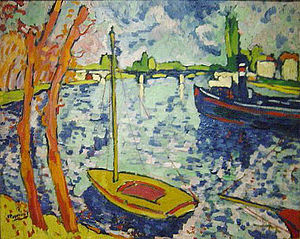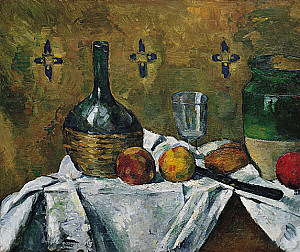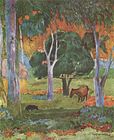At a London art exhibition in 1910, critic Roger Fry first coined the phrase ‘Post-Impressionism’. When you think of the Post-Impressionists, names such as Vincent Van Gogh, Paul Cezanne, Paul Gauguin, and Maurice De Vlaminck come to mind.
Design and shape were the features in which Cezanne approached his paintings. He was the central figure for the Post-Impressionists, and his work influenced the rest of the group.
In his painting, Still Life: Flask, Glass, and Jug, Cezanne shows his preoccupation with structure. He was more focused on showing the volume and space the objects in the painting inhabited than capturing a convincing likeness.
Design was also Paul Gauguin’s focus. He painted in flat areas of color abandoning spatial depth and effects of light. He tried to convey in his works what he thought was spiritual truth of his subjects by giving them symbolic and emotional meaning.

In his painting, Mountains at Saint-Remy, Van Gogh used the bight colors with heavy brush strokes in a simplified form which was the Post-Impressionists’ preference. This exemplified the aim of the art movement to communicate emotion.
In Maurice De Vlaminck’s landscape paintings you can see the influence that Van Gogh had on him with the vibrant colors and heavy brushstrokes. As with the other Post-Impressionists, De Vlaminck ignored detail, opting out for mood and emotion instead.



